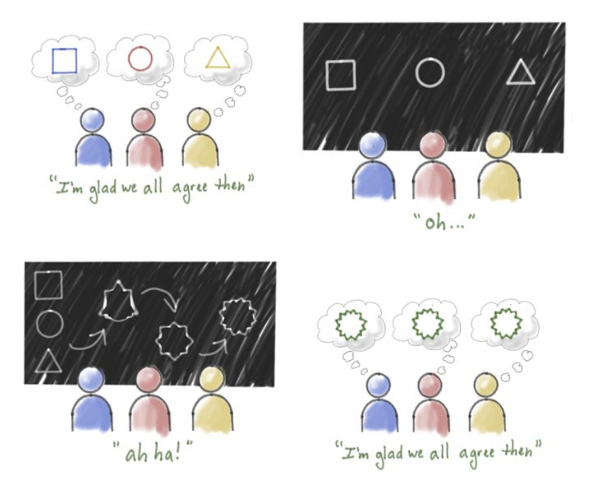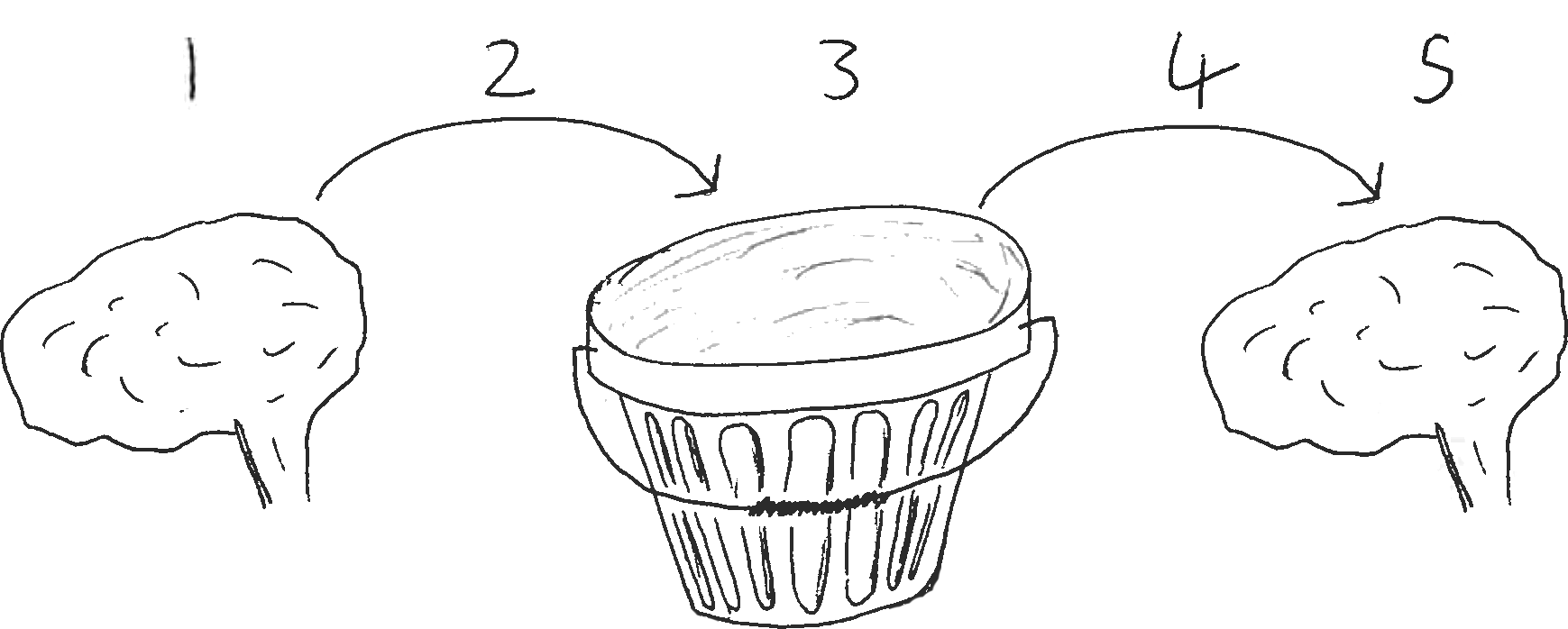Brain to brain in 5 steps
I came up with a diagnostic tool for pathogenic communication. I doubt that it’s novel, but it works.
- The thought is in your head,
- the process of getting it out of your head,
- the thought is now in the bucket,
- the process of the other person getting it out of the bucket
- the thought embedding itself in their head.
I’ll go through those stages a bit in a moment, but first the why and the pitfalls.
Why
We were talking a lot about communication as something monolithic that just happens. Often it fails! With a monolithic model all we know is that it fails. This model only works where there are simple failure modes. I saw it in action this weekend and it was helpful. As soon as someone pointed out the failing step it developed shared understanding.
Pitfalls
It won’t help in fixing the problem. It also is of no use in high functioning situations. If two people are communicating well, but the concept is difficult. In that sort of case something like story mapping[1. I’ve just started reading the book.] or maybe even just a conversation.

Jeff Patton and Luke Barrett’s cartoon – agreeing on a shared vision for a product
Details
- If you have a thought that you want to share with someone else then the first step is to organise it in a way that they could understand it. I'm guilty of not doing this all the time when I haven't formed an idea properly. That's fine; sharing half formed thoughts is where lots of great ideas come from.
- This is the process part. If you are sending an email then it's writing and sending it. An example of a failure here is writing the email without enough empathy for the reader. An even simpler failure could be a spelling mistake that changes the meaning.
- I've been calling this the bucket. This is where the information lives in between people. Often this is some kind of postal service (physical digital). An example of a failure here could be if I've written you a letter with a fountain pen. The post man drops the letter in a puddle and the ink runs. Neither you (the reader) or I (the writer) are at fault. This also works with conversation; the bucket is the air between you. If it's too noisy then it's a bucket failure.
- The Receiver. If the reader doesn't speak your language then they won't be able to parse the message. This could be someone writing in Welsh for an Australian audience. It could equally be using technical words where there's an asymmetry in understanding. Sometimes the reader just doesn't read the message. I'm going to put that sort of failure in this section because the bucket has done a perfectly good job.
- The last step is turning the data into knowledge. This relies on the person or people that you are sending the message to being able to turn the words into something that they can act on. Ideally understanding them in the way that you intended them. This step has a lot in common with the first step. It needs lots of empathy to understand what the words mean in the context of that person uttering them.
This seems to work just as well for communicating with lots of people as it does for communicating with just one.
This has lots of flaws but I found it useful. I’m interested in hearing ideas for tweaking it.
